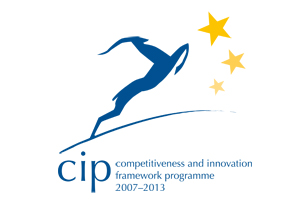| Good Practice Innovation Sheet |
  |
| Items |
Description |
| 1. WHO |
| Key people and organisations (initiator, leader, partners) |
Vereniging voor Vreemdelingenverkeer (Association for Tourism) of Koksijde-Oostduinkerke (V.V.V.). |
| Coastal and Marine Union EUCC and the City Council of Koksijde-Oostduinkerke |
| |
| Key Figures |
Surface |
Inhabitants |
Tourism arrivals |
Tourism nights |
| 43,95 km2 |
22.059 |
1.067.541 |
6.354.180 |
| 2. WHY |
| Reason for taking the good practice action |
Koksijde has a very rich fishing past. Horseback Shrimp Fishing is a practice which dates back to some 500 years, and although it was plied all around the North Sea - in France, the Netherlands and Britain, Koksijde is the only place in the world where this tradition is still alive. This rudimentary fishing technique is no longer financially viable, however it attracts many tourists, and it is considered one of the most valuable traditions of Koksijde and Belgium. As tourism grows, the coast is becoming more built-up, making more difficult for fishermen to farm or keep their horses nearby. Nowadays, only a dozen of men are active in the shrimp fishing on horseback. It is therefore essential to safeguard and protect this ancient custom before it disappears, because it constitutes a significant part of the cultural heritage and the local identity of Koksijde. |
| Issues and challenge |
A challenge was to maintain the number of active shrimpfishermen on horseback by passing their knowledge and tradition to the next generation within the family. It is not the intention to ‘recruit’ shrimpfishermen on horseback who have no relationship with this tradition. Another challenge consists of emphasize the tradition and the authenticity of this practice and not only calling it as a folklore. The shrimpfishermen on horseback are now selected for a nomination as UNESCO World Heritage (immaterial cultural heritage). The final decision will be made by the end of the year. |
| 3. HOW |
| Methods /steps / tools used (to develop the good practice) |
The shrimp fishing on horseback is practised in the seaside resort of Oostduinkerke. It takes place in the beach at low tide, both in summer and in winter (from March untill December), for about three hours. The craft is open and visible to the public. A calendar showing dates and times during the summer months at which shrimpers work is displayed at the Tourism Office and on their website, so everybody who visits Koksijde can get informed. People can talk with the fishermen, who provide information on their craft, attend shrimp cooking demonstrations that are frequently held along the beach, or buy freshly caught shrimp. The municipality of Koksijde is very committed to preserve and promote this traditional fishing method, which plays a fundamental role in a variety of social and cultural events that are organised throughout the year such as concerts, exhibitions, workshops and markets. Every summer the Tourist Office organises the Shrimp Festival, the most important act commemorating this ancient way of catching shrimp, and numerous activities are held during the weekend. The ‘Orde van de Paardenvisser’ NGO also actively supports this practice through a number of awareness-raising events which attract visitors and encourage young people and children to continue this tradition. The story of horseback shrimpfishermen has a special place in the NAVIGO-National Fishery Museum and, during the visits, educational activities and workshops are organized to increase the knowledge and the interest concerning this unique living tradition. |
| 4. RESULT |
| Specific/measurable results, benefits |
The efforts made by the municipality and the ‘Orde van de Paardenvisser’ NGO to preserve this craft have helped to bring all the community together and build a strong sense of collective identity. People living in Koksijde are very proud of its fishery tradition, which forms part of town life. This unique tradition has gained popularity in recent times and it has contributed to revitalize the area and foster the tourism in a substantial manner. During the Shrimp Parade Koksijde receives more than 10,000 visitors. By raising the awareness and engaging young generations to participate actively in their local fishing history and culture, Koksijde will ensure that this tradition endures into the future. |
| Recognitions (e.g. awards) |
QualityCoast Gold Award 2012-‘13 |
| 5. REFLECTION |
| Lessons learned |
The rich variety of events organised in relation to the horseback shrimp fishing as well as the efforts made by the local council and the ‘Orde van de Paardenvisser’ NGO to spread the awareness and to involve the local community have demonstrated to be essential in preserving this ancient tradition. |
| Challenges met |
The ‘Orde van de Paardenvisser’ NGO organizes international trips in order to establish contacts with other destinations where horseback shrimp fishing was also practiced in the past. These trips are a great opportunity to document this tradition and raise the awareness. |
| Critical success factors |
At the tourist office visitors can also buy a book about this tradition with explanation of the history and stories of the shrimpfishermen themselves. The shrimpfishermen on horseback also have their own internet site: www.depaardenvissers.be |
| 6. MORE |
| web-references, documents |
www.koksijde.be |










 Koksijde (BE)
Koksijde (BE)














































